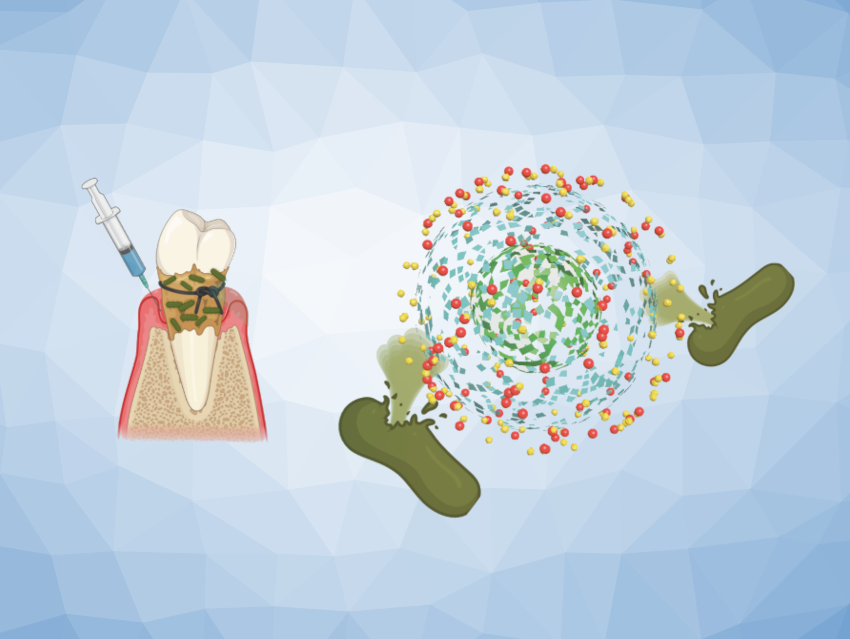Periodontitis, or gum disease, is a common chronic disease affecting the soft tissue around the teeth. It is a persistent inflammation usually induced by bacterial infection and can eventually lead to tooth loss. Periodontitis is also associated with systemic diseases such as cardiovascular diseases. Treatment involves tackling the bacterial infection with antimicrobials and using pro-angiogenesis medications (i.e., drugs promoting the formation of new blood vessels) for tissue regeneration. Local drug delivery systems are useful in this context to avoid a need for high dosages and minimize side effects.
Leixiao Yu, Sichuan University, Chengdu, China, Rainer Haag, Free University of Berlin, Germany, and colleagues have developed a dual-function, pH-responsive nanogel complex that combines the antimicrobial drug triclosan (TCS) and the pro-angiogenesis medication deferoxamine (DFO) for periodontitis treatment. The team synthesized a linear polyglycerol functionalized with vinyl ether acrylate (VEA) and triethylammonium chloride, which forms spherical aggregates that encapsulate the two drugs. The aggregates have a positively charged surface, which promotes bacteria adhesion.
In the acidic environment around an infection site, the triclosan and deferoxamine are released in a sustained, targeted manner due to the degradation of the nanogel by acetal cleavage. The researchers found that the nanogel causes the elimination of the gingivitis-causing bacteria Porphyromonas gingivalis in in vitro tests and can promote the formation of blood vessels. Using a mouse model, the team confirmed that the nanogel causes bone tissue regeneration and accelerated healing of periodontitis.
- pH‐Sensitive Polyglycerol Nanogels for Periodontitis Treatment through Antibacterial and Pro‐Angiogenesis Action,
Guoxin Ma, Ke Xu, Leixiao Yu, Rainer Haag,
Angew. Chem. Int. Ed. 2025.
https://doi.org/10.1002/anie.202418882



